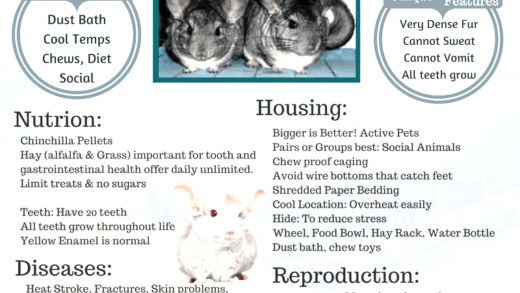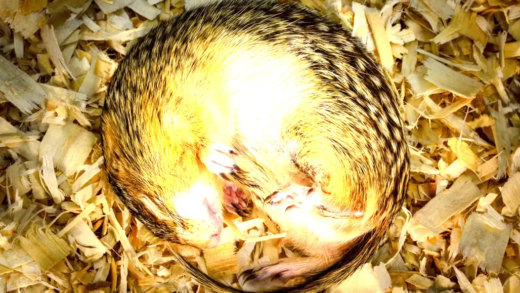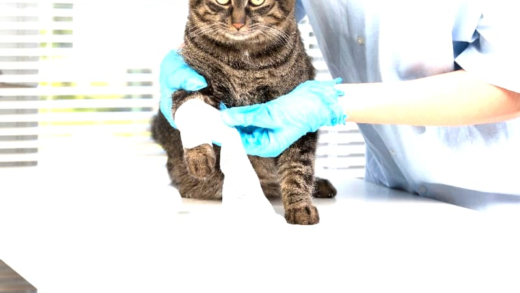Macaws mate for life, showcasing deep emotional bonds. They communicate through vocalizations and body language, with some learning to speak. Happy macaws display vibrant feathers and affectionate behaviors. In the wild, they exhibit fascinating foraging and nesting behaviors, and social interaction is vital for their well-being. Recognizing signs of happiness versus stress is crucial for care. Overall, understanding macaw behavior enriches the bond between birds and their owners.
Macaws Mate for Life: What It Means
Macaw behavior reflects a fascinating aspect of their lives: they mate for life. This means that once a pair of macaws forms a bond, they stay together for the long haul. Such lifelong partnerships are not just romantic; they are crucial for their emotional well-being. In the wild, these bonds help in raising offspring and protecting each other from predators. Macaws show deep affection through mutual grooming, vocalizations, and even playful antics.
When macaws engage in affectionate behaviors, it strengthens their connection. They often engage in synchronized movements, which can be quite a sight to behold. This commitment can be seen in the way they communicate. They rely heavily on body language and vocal calls to maintain their relationship. Interestingly, observing a pair of macaws can reveal a lot about their emotional state. Happy macaws often display vibrant feathers and can be seen cuddling closely.
Understanding this lifelong commitment helps in appreciating the depth of macaw relationships. It’s a beautiful reminder of the importance of companionship, even in the animal kingdom.
How Do Macaws Communicate?
Macaws have a rich and diverse way of communicating, both with each other and with humans. Their communication methods include vocalizations, body language, and even facial expressions. The first thing to note is that macaws are highly vocal birds. They can produce a variety of sounds, from loud squawks to soft whistles, each serving a different purpose.
Body language plays a crucial role in macaw communication. For instance, a macaw that fluffs its feathers is often expressing comfort or readiness to engage. In contrast, a puffed-up macaw might be signaling aggression or discomfort. Their bright plumage also has a role in communication, as different colors can indicate different emotional states or intentions.
Interestingly, macaws are known to mimic sounds they hear in their environment, including human speech. This ability is not just a party trick; it shows their intelligence and adaptability. By mimicking, they can connect with their human companions, forming a unique bond. Understanding these communication methods enhances our interactions with macaws, allowing us to connect on a deeper level.
Can All Macaws Learn to Speak?
When it comes to whether all macaws can learn to speak, the answer is generally yes, but with some caveats. Not every macaw will develop the same speaking ability, as it largely depends on the individual bird’s personality and the amount of social interaction it receives. Some species, like the Blue-and-yellow and the Scarlet macaw, are particularly adept at mimicking human speech.
Factors that influence a macaw’s ability to learn to speak include age, socialization, and environment. Young macaws tend to be more receptive to learning new sounds and words. Regular interaction with humans can significantly boost their chances of picking up speech. The more they hear words and phrases, the more likely they are to mimic them.
However, it’s important to note that not all macaws will develop a large vocabulary. Some may only pick up a few words, while others might surprise their owners with an extensive repertoire. Ultimately, the key lies in patience, consistent interaction, and a nurturing environment.
Words and Phrases Macaws Can Learn
Macaws can learn a surprising array of words and phrases. The words they pick up often reflect their environment and the interactions they have with their human companions. Common words include simple commands like “hello,” “goodbye,” and even their names. Some macaws have been known to learn phrases that reflect their daily routines, such as “want a treat?” or “let’s go outside!”
Training a macaw to speak involves repetition and positive reinforcement. Using treats or praise when they mimic a word can encourage further attempts. It’s fascinating to see how they can connect words with actions, making the learning process more engaging for both the bird and its owner.
Moreover, the social nature of macaws means they often learn words from one another. If one macaw in a household picks up a phrase, others might follow suit, creating a lively atmosphere filled with chatter. This ability to learn and adapt adds to the joy of having macaws as companions, showcasing their intelligence and social nature.
Why Do Macaws Blush When Happy?
Macaw behavior is intriguing, especially when it comes to their emotional responses. One fascinating aspect is why macaws blush when they are happy. This behavior is often seen in the form of brightening colors in their feathers. When a macaw feels joy or excitement, blood flow increases to their skin, enhancing the vibrancy of their plumage. This natural blush signals their emotional state, indicating happiness and comfort.
Interestingly, this blush is not just about aesthetics; it plays a role in social interactions. A cheerful macaw may attract the attention of others, reinforcing social bonds. Their colorful feathers act as a visual cue, letting other macaws know they are in a good mood. This behavior can also be observed during playtime or when they are around their favorite humans. So, if you notice your macaw’s feathers looking extra vibrant, it’s likely they are feeling quite happy!
Showing Affection: How Macaws Express Love
Macaws are known for their affectionate behavior, which is an essential part of their social nature. Macaws show affection in various ways, including mutual grooming, cuddling, and vocalizations. Grooming is a significant bonding activity; it helps to strengthen their relationships and maintain a healthy coat. When one macaw preens another, it’s a sign of trust and love. This behavior is often accompanied by soft sounds, further emphasizing their emotional connection.
Physical closeness is another way macaws express love. They often sit close to their partners or human caregivers, sharing their space and warmth. Vocalizations also play a vital role; macaws might mimic sounds or call to each other to maintain contact. These affectionate gestures not only enhance their relationships but also contribute to their overall well-being. It’s important for owners to reciprocate this affection, as it fosters a strong bond and a happy environment for the bird.
Macaw Lifespan: How Long Do They Live?
The lifespan of macaws is quite impressive, often ranging between 30 to 50 years, depending on the species. Factors influencing their lifespan include genetics, diet, and living conditions. Proper care can significantly enhance their longevity. For instance, a balanced diet rich in vitamins and minerals supports their health, while regular social interaction keeps them mentally stimulated.
In captivity, macaws may live longer due to the absence of predators and access to medical care. However, they still require a lot of attention and enrichment to thrive. Providing a large cage, toys, and opportunities for social interaction are crucial for their happiness and health. Understanding the lifespan of macaws emphasizes the commitment required when adopting one of these vibrant birds.
Are Macaws Social Birds?
Yes, macaws are highly social birds, thriving on interaction with others. Their social nature is evident in the wild, where they often live in large flocks. These flocks provide safety in numbers and enhance their social behaviors. In captivity, macaws need regular social interaction, whether with other birds or humans, to remain happy and healthy.
Social behaviors include vocalizations, play, and mutual grooming. A lack of socialization can lead to behavioral issues, such as excessive screaming or feather plucking. Therefore, it’s essential for macaw owners to engage with their pets daily. Whether through talking, playing, or simply spending time together, these interactions are vital for their emotional well-being. Understanding that macaws are social creatures helps owners create a fulfilling environment for their feathered friends.
Fascinating Wild Behaviors of Macaws
Macaws display a range of interesting behaviors in the wild that reflect their adaptability and social nature. These behaviors include foraging, nesting, and social interactions. In the wild, macaws often forage in flocks, seeking fruits, nuts, and seeds. Their foraging habits are not just about survival; they demonstrate their intelligence and ability to work together. By communicating through various calls, they can alert each other about food sources or potential dangers.
Moreover, nesting behaviors are quite remarkable. Macaws typically nest in tree cavities, where they lay their eggs and raise their young. This provides a safe environment away from predators. Their parenting is a shared responsibility, with both male and female participating in feeding and caring for the chicks. Additionally, macaws engage in playful antics, such as swinging from branches and chasing each other, showcasing their playful side and strengthening social bonds.
Understanding these wild behaviors offers insight into their natural instincts and helps in creating a more enriching environment for pet macaws. Observing how they interact in the wild can inspire owners to mimic these behaviors at home, promoting a happier, healthier bird.
Recognizing a Happy Macaw: Signs of Contentment vs. Stress
Recognizing the signs of a happy macaw is essential for any owner. Happy macaws exhibit behaviors that include vocalizations, playful antics, and comfortable body language. They may be seen flapping their wings, preening, or engaging in social interactions with their human companions or other birds. A well-adjusted macaw often has bright, vibrant feathers and a relaxed posture.
On the other hand, signs of stress can manifest through excessive screaming, feather plucking, or aggressive behaviors. A stressed macaw may also have ruffled feathers and avoid interaction. It’s crucial to monitor these behaviors to ensure the well-being of the bird. Providing a stimulating environment, with plenty of toys and social interaction, can help mitigate stress and promote happiness.
Understanding the emotional cues of macaws allows owners to respond effectively to their needs, ensuring a fulfilling relationship that enhances the bird’s quality of life.
The Role of Social Interaction in Macaw Lives
Social interaction is vital for macaws, influencing their behavior and emotional well-being. In the wild, they thrive in flocks, relying on each other for safety and companionship. This social structure plays a significant role in their development, as interactions help them learn important skills and behaviors.
For pet macaws, regular socialization with humans or other birds is essential. Daily interaction helps prevent behavioral issues and promotes mental stimulation. Engaging in play, talking, and even simple companionship can significantly enhance a macaw’s happiness. Owners should strive to create a social environment that mimics their natural behaviors, allowing for ample opportunities to connect.
In summary, understanding the importance of social interaction for macaws helps owners appreciate their needs and fosters a nurturing environment. This awareness leads to happier, healthier birds and stronger bonds between macaws and their caretakers.
Conclusion: Embracing the World of Macaws
Macaws are remarkable creatures with complex behaviors and rich social lives. From their lifelong partnerships and communication methods to their fascinating behaviors in the wild, they offer a glimpse into the beauty of avian life. Recognizing the signs of happiness and stress is crucial for any owner, ensuring the emotional well-being of these vibrant birds.
Furthermore, understanding the significance of social interaction allows for a more fulfilling companionship. Macaws thrive on connection, and fostering this bond enhances their quality of life. Embracing the world of macaws means appreciating their unique traits and providing an environment that nurtures their natural behaviors, leading to a rewarding experience for both the bird and its owner.





Comments are closed.